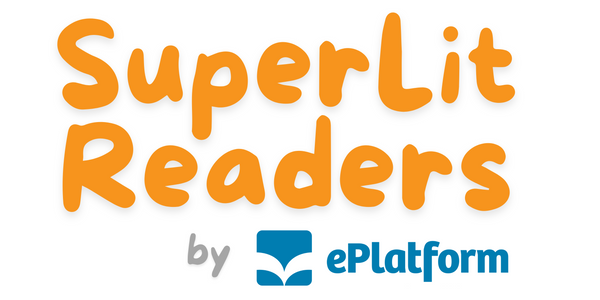Decodable Readers 101: Science-backed Literacy Development
TL;DR Summary:
Decodable readers are structured literacy tools that align with systematic phonics instruction to build foundational reading skills. Why they work:
✅ Phonics-First Design: Target specific sound-letter patterns (e.g., CVC words, digraphs) to reinforce decoding.
✅ Confidence & Fluency: Controlled vocabulary prevents overwhelm, letting kids master skills incrementally.
✅ Classroom & Home Use: Proven strategies for teachers (small-group instruction) and parents (daily reading routines).
✅ Myth-Busting: Modern decodable readers are engaging and essential for all early readers, not just struggling students.
✅ Long-Term Impact: Studies link decodable readers to improved spelling, comprehension, and reading resilience.

Table of Contents:
1. Understanding Decodable Readers
2. The Importance of Phonics in Early Literacy
3. How Decodable Readers Support Reading Development
4. Benefits of Using Decodable Readers in the Classroom
5. Choosing the Right Decodable Readers for Different Ages
6. Strategies for Implementing Decodable Readers at Home
7. Common Misconceptions About Decodable Readers
8. The Role of Parents and Educators in Promoting Literacy
9. Success Stories: Impact of Decodable Readers on Young Learners
10. Conclusion: Fostering a Love for Reading Through Decodable Texts
1. Understanding Decodable Readers
What Are Decodable Readers?
Decodable readers are specially crafted books designed to help early readers develop their decoding skills. These texts are constructed using a controlled vocabulary that aligns with the phonetic patterns children are learning. By focusing on specific phonemes and graphemes, decodable readers provide young learners with the opportunity to practice and reinforce their knowledge of sound-letter relationships. This systematic approach is essential for building a strong foundation in literacy.
In contrast to traditional picture books, which may feature a wide range of vocabulary and complex sentence structures, decodable readers use a carefully selected set of words that match the reader's current learning stage. This design ensures that children are not overwhelmed by unfamiliar words and can concentrate on decoding the text accurately. As a result, they experience a sense of achievement and progress, which fuels their motivation to continue reading.
Moreover, decodable readers are often designed with engaging and age-appropriate content, making the learning process enjoyable. The stories are crafted to capture the interest of young readers, encouraging them to immerse themselves in the narrative while practicing their reading skills. By offering a blend of educational value and entertainment, decodable readers play a crucial role in fostering a positive attitude towards reading and learning.
2. The Importance of Phonics in Early Literacy
Systematic Synthetic Phonics Instruction: The Science-Backed Foundation of Early Reading
Phonics is a fundamental component of early literacy, as it teaches children to recognise the relationship between letters and sounds. Understanding phonics is crucial for decoding words, which is the process of translating written text into spoken language. Phonics instruction typically begins with teaching children to identify individual sounds (phonemes) and the letters or groups of letters (graphemes) that represent those sounds.
Research has shown that systematic and explicit phonics instruction is highly effective in helping children develop strong reading skills. By mastering phonics, children can decode new words independently, leading to improved reading fluency and comprehension. This foundational skill is particularly important for early readers, as it sets the stage for more advanced literacy development.Decodable readers are an integral part of phonics instruction, as they provide children with the opportunity to apply their phonics knowledge in a meaningful context. These texts reinforce the phonetic patterns being taught, allowing children to practice decoding words with confidence. As they become more proficient in phonics, they can tackle increasingly complex texts, gradually expanding their vocabulary and comprehension skills.
3. How Decodable Readers Support Reading Development
How Decodable Readers Build Fluency and Decoding Skills
Decodable readers support reading development by providing a structured and incremental approach to learning. Each book is designed to align with specific phonetic concepts, allowing children to build their skills progressively. This scaffolded approach ensures that learners are not introduced to new concepts before they are ready, reducing frustration and promoting a sense of accomplishment.
One of the key benefits of decodable readers is that they focus on the systematic practice of decoding skills. By repeatedly encountering the same phonetic patterns, children reinforce their understanding and become more fluent readers. This repetition helps to solidify their knowledge, making it easier for them to recognise and decode words in future readings.
Additionally, decodable readers often include illustrations and contextual clues that support comprehension. These visual aids help children make connections between the text and the story, enhancing their overall understanding. By combining phonics practice with engaging narratives and supportive illustrations, decodable readers create a holistic learning experience that addresses multiple aspects of reading development.
4. Benefits of Using Decodable Readers in the Classroom
Classroom Benefits of Phonics-Aligned Decodable Texts
Incorporating decodable readers into the classroom offers numerous benefits for both students and educators. One of the primary advantages is that these texts provide a consistent and systematic approach to teaching reading. By aligning with phonics instruction, decodable readers ensure that children receive targeted practice that complements their learning.
For teachers, decodable readers serve as valuable tools for assessing student progress. By observing how children interact with the text and decode words, educators can identify areas of strength and areas that may require additional support. This ongoing assessment allows for personalised instruction, ensuring that each student receives the appropriate level of challenge and support.
Furthermore, decodable readers can be used to promote collaborative learning and peer support. In a classroom setting, children can work together to read and discuss the stories, sharing strategies and insights. This collaborative approach fosters a sense of community and encourages children to learn from one another, further enhancing their reading skills and confidence.
5. Choosing the Right Decodable Readers for Different Ages
Matching Books to Phonics Milestones (Pre-K to Grade 2)
Selecting the appropriate decodable readers for different age groups is essential for maximising their effectiveness. For younger children, it is important to choose texts that match their current phonetic knowledge and reading abilities. Books with simple sentence structures, familiar vocabulary, and clear illustrations are ideal for early readers who are just beginning to develop their decoding skills.
As children progress, it is important to introduce them to more challenging texts that build on their existing knowledge. For slightly older children, decodable readers with more complex sentence structures and a broader range of vocabulary can provide the necessary challenge to advance their skills. These texts should still align with the phonetic patterns being taught, ensuring that children can apply their decoding skills confidently.
It is also important to consider the interests and preferences of individual learners. Decodable readers come in a variety of genres and themes, from adventure stories to informational texts. By selecting books that align with children's interests, educators and caregivers can increase engagement and motivation, making the reading experience more enjoyable and meaningful.
6. Strategies for Implementing Decodable Readers at Home
Phonics at Home: Practical Strategies for Using Decodable Readers with Young Learners
Parents and caregivers play a vital role in supporting their children's literacy development, and incorporating decodable readers at home is an effective strategy. One of the most important steps is to establish a regular reading routine. Setting aside a specific time each day for reading allows children to practice their skills consistently and develop a habit of reading.
It is also beneficial to create a supportive and encouraging reading environment. Providing a comfortable and quiet space for reading can help children focus and enjoy the experience. Additionally, parents can model good reading habits by reading aloud and discussing the stories with their children. This interaction helps to reinforce comprehension and encourages children to think critically about the text.
Parents can also support their children's reading development by providing a variety of decodable readers that match their current skill level and interests. By offering a range of texts, parents can keep the reading experience fresh and engaging, preventing boredom and promoting continuous progress. Encouraging children to choose their own books can also foster a sense of ownership and autonomy, further motivating them to read.
7. Common Misconceptions About Decodable Readers
Debunking 3 Misconceptions About Decodable Readers
Despite their proven effectiveness, there are several common misconceptions about decodable readers that may deter some educators and caregivers from using them. One misconception is that decodable readers are boring and lack engaging content. While it is true that early decodable texts may have simpler storylines, many modern decodable readers are designed to be both educational and entertaining. They often feature captivating characters, imaginative plots, and vibrant illustrations that appeal to young readers.
Another misconception is that decodable readers are only suitable for struggling readers or those with learning difficulties. In reality, decodable readers are beneficial for all early readers, as they provide the foundational skills necessary for successful literacy development. By offering structured and systematic practice, decodable readers can help all children build confidence and fluency in reading.
Some may also believe that decodable readers are unnecessary if children are exposed to a rich literary environment with a variety of traditional books. While exposure to a wide range of texts is important, decodable readers offer targeted practice that is essential for developing decoding skills. They complement other reading materials and provide the structured support that children need to become proficient readers.
8. The Role of Parents and Educators in Promoting Literacy
How Parents and Teachers Can Partner for Phonics Success
Parents and educators play a crucial role in promoting literacy and supporting children's reading development. By working together, they can create a consistent and supportive learning environment that fosters a love for reading. One of the key responsibilities of both parents and educators is to provide access to a variety of reading materials, including decodable readers.
Educators can support literacy development by integrating decodable readers into their curriculum and providing regular opportunities for children to practice reading. They can also offer guidance and feedback, helping children develop effective decoding strategies and reinforcing their phonics knowledge. Additionally, teachers can collaborate with parents to share resources and strategies for supporting reading at home.
Parents can reinforce the work being done in the classroom by reading with their children and discussing the stories. They can also encourage their children to read independently and praise their efforts and progress. By creating a positive and encouraging reading environment, parents can help children develop a lifelong love for reading and learning.
9. Success Stories: Impact of Decodable Readers on Young Learners
Real-World Results: How Decodable Readers Transformed Early Reading Skills
The impact of decodable readers on young learners is evident in numerous success stories from classrooms and homes around the world. One notable example is the improvement in reading fluency and confidence observed in children who regularly use decodable readers. By providing structured and systematic practice, these texts help children develop strong decoding skills, leading to greater reading proficiency.
In many cases, children who initially struggled with reading have made significant progress through the use of decodable readers. These texts provide the targeted support needed to address specific areas of difficulty, allowing children to build their skills incrementally. As a result, many young readers experience a boost in confidence and motivation, which further enhances their reading development.
Educators have also reported positive outcomes from incorporating decodable readers into their classrooms. By aligning these texts with phonics instruction, teachers have been able to provide more effective and individualized support for their students. The use of decodable readers has led to improved reading outcomes, greater engagement, and a more positive attitude towards reading among students.
10. Conclusion: Fostering a Love for Reading Through Decodable Texts
The Lifelong Impact of Decodable Texts on Literacy
In conclusion, decodable readers play a vital role in unlocking literacy for early readers. By providing structured and systematic practice, these texts help children develop the essential decoding skills needed for reading fluency and comprehension. The carefully designed content of decodable readers aligns with phonics instruction, offering targeted support that complements the learning process.
Incorporating decodable readers into early education, both in the classroom and at home, can have a transformative impact on young learners. These texts not only enhance reading skills but also foster a love for books and learning. By creating engaging and supportive reading experiences, educators and caregivers can help children develop the confidence and motivation needed to become lifelong readers.
Ultimately, the power of decodable readers lies in their ability to make reading accessible and enjoyable for all children. By embracing these valuable resources, we can unlock a world of possibilities for young learners, setting them on a path to successful and fulfilling literacy development.
— Happy Reading!
Shop Decodable Readers for Schools in New Zealand!




